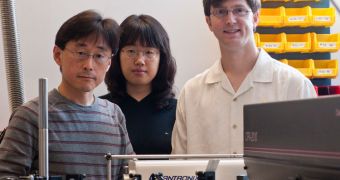A group of experts at the Rice University was recently able to demonstrate that superfluorescence – a phenomenon resulting in the collective emission of fluorescent light by an ensemble of excited atoms or ions – can occur in solid-state materials.
The first to see clues that superfluorescence could exist in solid materials was Rice graduate students Tim Noe, during an investigation he conducted in 2010. He and his colleagues at the time were studying so-called many-body problems.
Many-body problems is the generic name given to a host of problems, mostly belonging to the field of physics, and having to do with the way multiple particles interact in a microscopic system. Very often, quantum mechanics is used to validate the solutions experts get for these problems.
For the 2010 study, Noe observed electron-hole pairs working together to make superfluorescence possible. T4e graduate student works in the lab of Rice physicist Junichiro Kono. Details of the investigation were published in this week's issue of the esteemed journal Nature Physics.
The basis of the new investigation was a stack of 15 undoped quantum wells. Each of these structures was made up of arsenic, gallium and indium, and their various regions were separated from each other through barriers of gallium-arsenide (GaA).
Researchers used this chemical and physical combo to create the necessary conditions for the emergence of superfluorescence. The wells were exposed to extremely cold temperatures, and were bombarded with high-intensity laser pulses, while exposed to strong magnetic fields.
“When you shine light on a semiconductor with a photon energy larger than the band gap, you can create electrons in the conduction band and holes in the valence band. They become conducting,” Kono says. He is a professor of electrical and computer engineering, and of physics and astronomy, at Rice.
“The electrons and holes recombine – which means they disappear – and emit light. One electron-hole pair disappears and one photon comes out. This process is called photoluminescence,” he explains.
Noe says that the superfluorescence phenomenon occurs out of the fact that the constantly-increasing absorption and scattering rates of light – as it passes through the well stacks – is generating a macroscopic coherency.
“What's unique about this is the delay time between when we create the population of electron-hole pairs and when the burst happens. Macroscopic coherence builds up spontaneously during this delay,” Noe concludes.
The US National Science Foundation and the National High Magnetic Field Laboratory supported this research.

 14 DAY TRIAL //
14 DAY TRIAL //